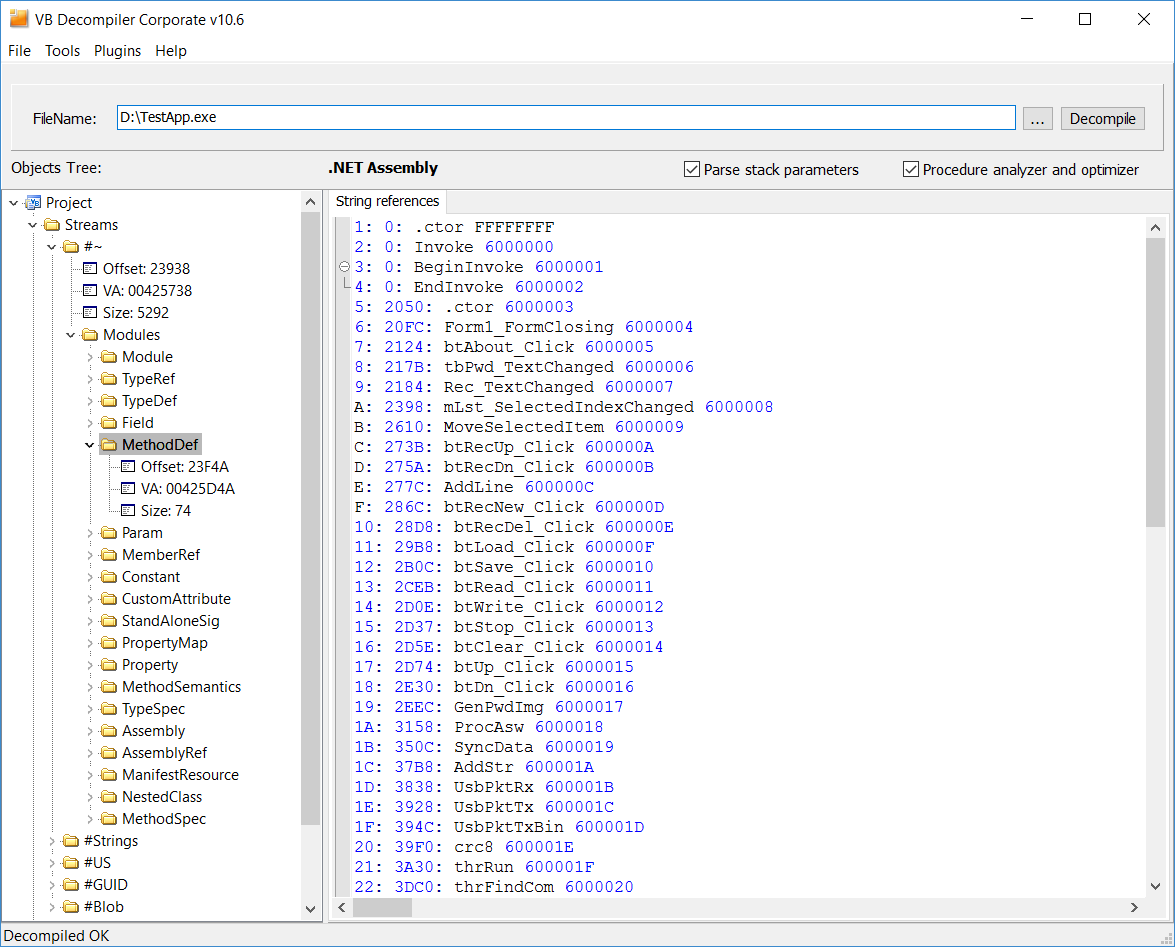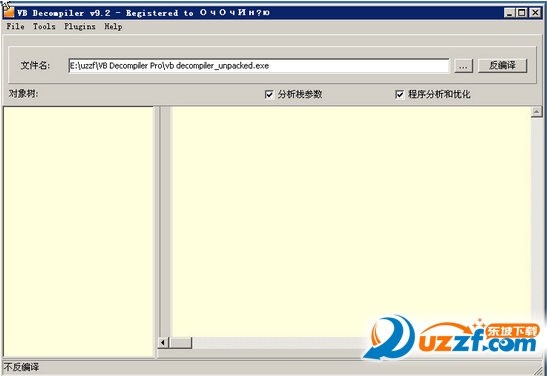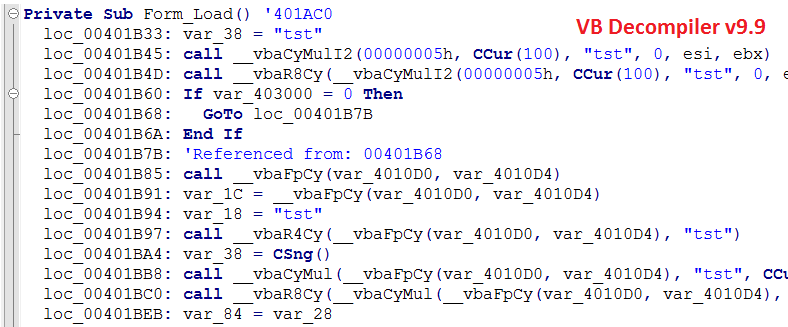

Now the "Disassembler" tab displays the low-level code. The major change in the new version of the product is the tabbed interface used for the main screen containing the code. The only condition is that you use a HEX address. You can put the "loc_" prefix before the address. You can enter an address as an offset or as a virtual address (VA). The editor has a smart "go to the address" feature.


You can undo/redo any changes, and you can select and copy code blocks. The editor lets you edit the file being analyzed byte-wise or by copying/inserting blocks. Now the decompiler has a built-in HEX editor, state of the art and easy to use. You can also navigate between functions by clicking the arrow buttons above the object tree. It's easy to go back to the previous function, too-just press the ESC key. The decompiler will find the function and open it for viewing (the highlighting of links has not been implemented yet). Now it's so much easier to do-just double-click the called function's name in the code, and that's it. Earlier you had to look for the function being called in the tree containing a list of modules and procedures, and then manually go to that function to view it. When a code is analyzed, it is frequently found that functions often call other functions or procedures. That's why I'd like to tell you more about it. Though this feature was introduced in the previous version, few people knew about it, and even fewer used it. Hopefully, now the product will be much easier to use. The changes have been brewing for quite a long time. When working on this release, we focused on the decompiler's usability when analyzing a code. I am happy to announce a new version of VB Decompiler.


 0 kommentar(er)
0 kommentar(er)
